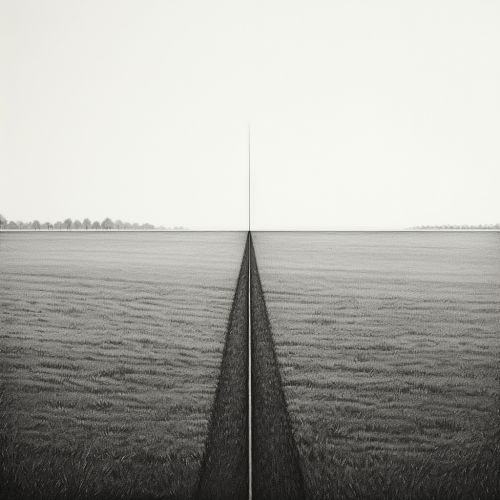Parallel postulate
Introduction
The Parallel postulate, also known as Euclid's fifth postulate, is a fundamental principle in Euclidean geometry. It states that, given a straight line and a point not on the line, there exists exactly one straight line through the point that is parallel to the given line. This postulate is one of the five original postulates outlined by the ancient Greek mathematician Euclid in his seminal work, "Elements".


Historical Background
The parallel postulate has a rich historical background, with its origins dating back to the era of ancient Greek mathematics. Euclid, in his work "Elements", laid down five postulates that formed the basis of the geometry we study today. The fifth of these postulates, now known as the parallel postulate, was unique in that it was more complex and less intuitive than the other four. This led many mathematicians throughout history to attempt to prove it as a theorem using the other four postulates, but all such attempts were unsuccessful.
Euclid's Postulates
Euclid's five postulates are the foundation of Euclidean geometry. They are:
1. A straight line segment can be drawn joining any two points. 2. Any straight line segment can be extended indefinitely in a straight line. 3. Given any straight line segment, a circle can be drawn having the segment as radius and one endpoint as center. 4. All right angles are congruent. 5. If a straight line falling on two straight lines makes the interior angles on the same side less than two right angles, the two straight lines, if extended indefinitely, meet on that side on which the angles are less than the two right angles.
The fifth postulate is the parallel postulate. It is more complex and less intuitive than the other four, which led to many attempts throughout history to prove it using the other postulates.
The Parallel Postulate
The parallel postulate, in its original form as stated by Euclid, is as follows: "If a straight line falling on two straight lines makes the interior angles on the same side less than two right angles, the two straight lines, if extended indefinitely, meet on that side on which the angles are less than the two right angles."
In simpler terms, this postulate states that, given a straight line and a point not on the line, there is exactly one line through the point that is parallel to the given line. This is a fundamental principle of Euclidean geometry.
Attempts to Prove the Parallel Postulate
Throughout history, many mathematicians attempted to prove the parallel postulate using Euclid's other four postulates. These attempts were based on the belief that the parallel postulate was not a fundamental principle, but a theorem that could be derived from the other postulates. However, all such attempts were unsuccessful.
In the 19th century, mathematicians began to explore geometries that did not include the parallel postulate, known as non-Euclidean geometries. These geometries, which include hyperbolic and elliptic geometry, have proven to be consistent and useful in many areas of mathematics and physics, particularly in the theory of general relativity.
Non-Euclidean Geometries
Non-Euclidean geometries are geometries that do not include the parallel postulate. The two most well-known non-Euclidean geometries are hyperbolic geometry and elliptic geometry.
In hyperbolic geometry, there are infinitely many lines through a given point that are parallel to a given line. In elliptic geometry, there are no lines through a given point that are parallel to a given line. These geometries have proven to be consistent and have many applications in modern mathematics and physics.
Conclusion
The parallel postulate is a fundamental principle of Euclidean geometry that has a rich historical background and a significant impact on the development of mathematics. Despite many attempts to prove it as a theorem, it remains a postulate - an assumption that is accepted without proof. The exploration of non-Euclidean geometries, which do not include the parallel postulate, has further enriched the field of geometry and has had profound implications in areas such as physics and cosmology.
